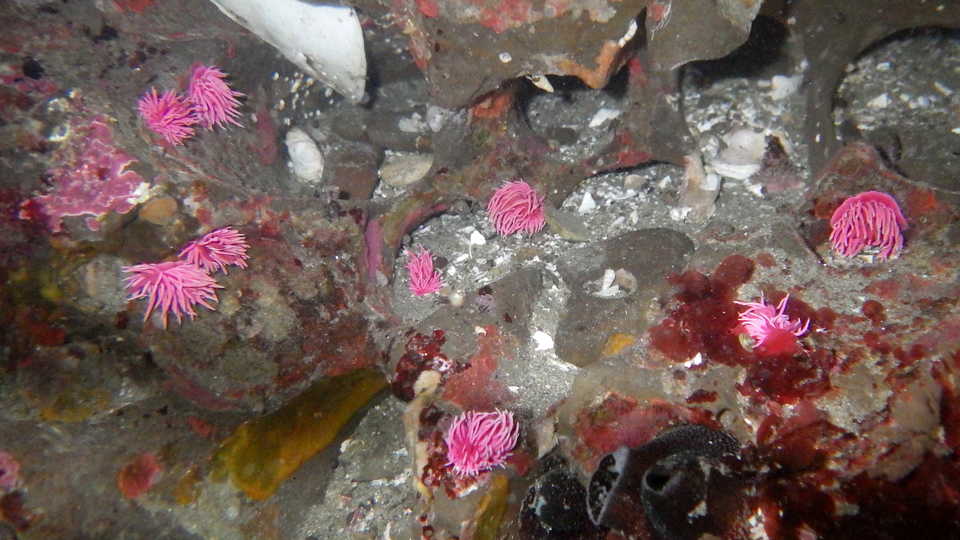Science News
Nudibranchs Could Signify Ocean Shift
These spectacular pink poof-balls are actually nudibranchs, or sea slugs, that are suddenly making an abundant appearance off our coast in northern California. The Hopkins’ Rose nudibranchs (Okenia rosacea) are no strangers to southern California waters, but their northern bloom—along with a slew of other marine species spotted north of their typical ranges—may signal a much larger shift in ocean climate or a strong forthcoming El Niño, according to a team of researchers, including the Academy’s Terry Gosliner.
Groups of volunteers, including Academy citizen scientists, were among the first to document and raise flags about the surprising nudibranch population explosion last fall, tracking their observations on iNaturalist, a platform for documenting nature available on mobile phones.
The pink nudibranchs have not appeared so far north or in such high numbers since the strong El Niño events—periods of warmer-than-usual ocean water and heavy rains—of 1998 and 1983. But without an official El Niño on record for 2015, scientists note that the recent sea slug bloom may mirror a much larger climate shift that occurred in the eastern Pacific Ocean nearly four decades ago.
In 1977, these blushing beauties appeared in record numbers along the California coast under weak El Niño conditions, coinciding with a major, decades-long period of elevated ocean temperatures. Warmer coastal waters altered the ranges of many ocean-dwellers, including several species of gastropods, fishes, and dolphins.
“While we are thrilled to see this beautiful bloom of normally-rare nudibranchs, we are concerned about the long term consequences of our changing coastal environment,” says Gosliner. “Our current climate conditions are great for some of my favorite slugs, but we can’t ignore that warming seas mean less food for sea birds, and adverse impacts for all marine ecosystems. California’s unique marine life can’t always adapt to so much instability.”
The showstopping slugs are ideal for tracking relatively rapid changes in ocean conditions because they grow fast, live for about one year, and tend to spend their adult lives in a small patch of the ocean floor. Like previous population explosions of Okenia rosacea, the current nudibranch bloom includes species typically found farther south, including the bright purple and orange Spanish Shawl (Flabellina iodine) and the California Sea Hare, (Aplysia californica).
Get out there and observe the pink beauties yourself! Californians can snag a prime view of the current sea slug bloom in rocky shore tide pools along at Montaña de Oro and Asilomar State Parks, Scott Creek Beach, Pigeon and Pillar Points, Fitzgerald Marine Reserve and Duxbury Reef. Check your local tide predictions, and aim for a “minus tide” when both the swell and wind are low. And help scientists track the bloom—download the iNaturalist app before you head out.
Images: Jeff Goddard and Gary McDonald


